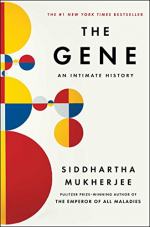|
This section contains 521 words (approx. 2 pages at 400 words per page) |

|
Summary
By the early 1960s, "genetics had found a means to describe the flow of information from organism to organism, and—within an organism—from encryption to form. A mechanism of heredity had emerged" (172). The question remained: "How did this flow of biological information achieve the observed complexity of living systems?" (172). Jacques Monod studied E. coli bacteria and observed that, when exposed to both lactose and glucose, the bacteria selectively consume all the glucose first then pauses in growth before beginning to consume the lactose. This suggested that "genes could be regulated by metabolic inputs" or, in other words, "genes must be being turned on and off, like molecular switches" (174). In short, "a gene [...] possessed not just information to encode a protein, but also information about when and where to make that protein" (177). Furthermore, "Even though every cell contains the same...
(read more from the Regulation, Replication, Recombination (Part Two) Summary)
|
This section contains 521 words (approx. 2 pages at 400 words per page) |

|




